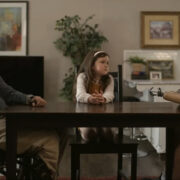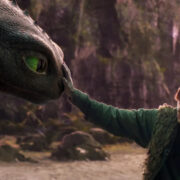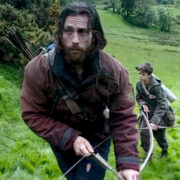Horrific Inquiry: THE WOLF MAN (1941)
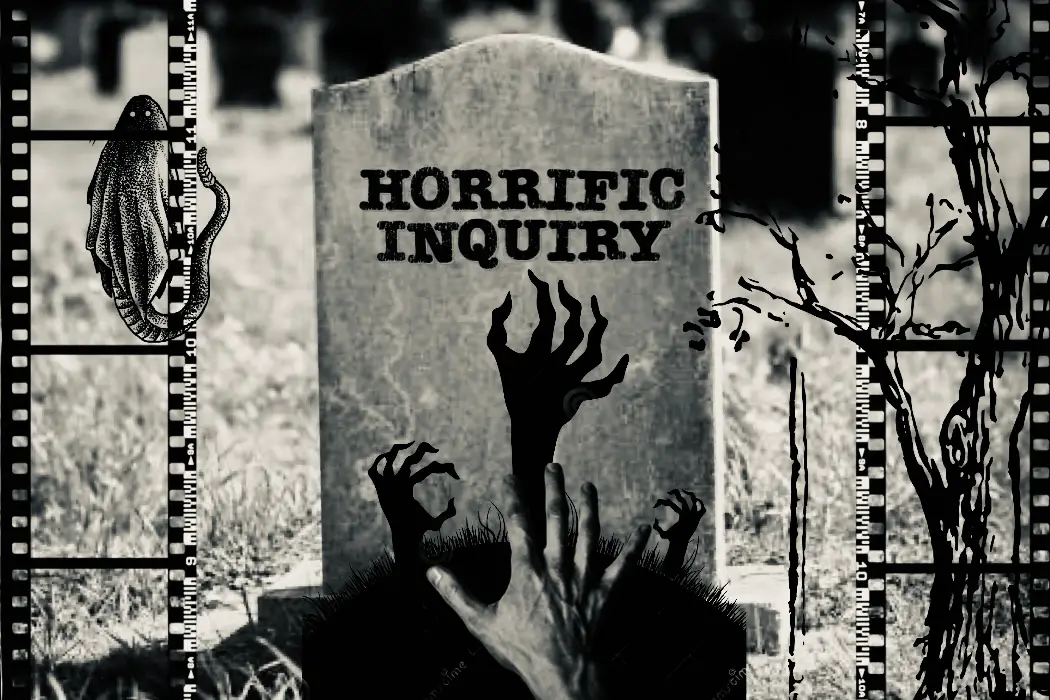
Stephanie Archer is 39 year old film fanatic living in…
Welcome back to the scariest, and at times goriest, column here at Film Inquiry: Horrific Inquiry. Twice a month, I will be tackling all things horror, bringing two films back into the spotlight to terrify and frighten once more. And occasionally looking at those that could have pushed the envelope further. Join us as we dive deep into the heart of horror, but warning, there will be spoilers.
It’s that time of the year again – the beloved month of horror. While the leaves may have begun to change and decorations strung with horror, it doesn’t truly feel like Halloween until the calendar reads October. An entire month dedicated to cinematic terrors – and Horrific Inquiry is here to join in on the fun! Each week throughout the month, we will be covering horrors over the decades to keep your marathon going. And what better way to start than by returning to the annals of cinematic horror history and vault of Universal’s Creature Features with 1941’s The Wolf Man.
The Legend of the Werewolf
The opening of The Wolf Man feels far removed from the classic Creature Features of the early 1930s. Gone are the symphonies to the back drop of title cards. Rather, it feels like the quintessential 80s and 90s television comedy episodic introductions. Each actor is introduced, smiling, with both their names and that of their character’s shown below. It is an awkward beginning to a horror film, far removed from the boisterous and dark introductions of horrors before. As the film begins to transition to its central story, the camera slowly zooms in on a series of books, one in particular opened to reveal the definition of Lycanthropy. The camera holds on the definition, providing ample time for the audience to read, setting the mood for the terrifying tale it about to tell.
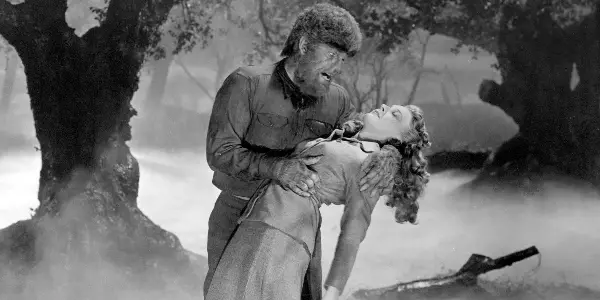
However, may it be the decades that have passed since, George Waggner‘s The Wolf Man is far from terrifying. Too often, it feels too afraid to commit as the films in the 1930s did. Much of this can most likely be attributed to the establishment of the Production Code in 1934, which would limit and regulate the content shown in films – especially horror films. For me personally, it may just be that werewolves have never been my favorite mythological horror.
Following the film’s introduction and definition of Lycanthropy, the film moves audiences to the home of Sir John Talbot (Claude Rains), his son Larry (Lon Chaney Jr.) arriving home after 18 years to take his place in line to run the estate after the death of his brother. There is a gleefully innocent nature to Larry as makes his way through his father’s home, fixing his telescope. Early on, the film leans into a surprisingly salacious interest in pairing Larry with the engaged Gwen (Evelyn Ankers) next door. Using the telescope, Larry watches Gwen in her room, noting the earrings she was wearing as he attempts to make a purchase at her shop later on.
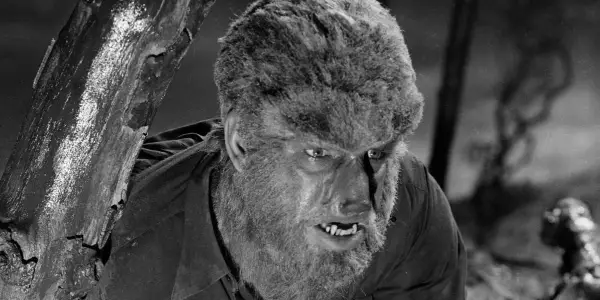
While the film wants to instigate the potential scandal of Larry and Gwen, it uses this moment between the them to introduce the lore of the Werewolf. Larry purchases a cane with a silver handle in the shape of a wolf. While the wolf itself is enough of a conversation starter, it is the pentagon it sports that truly stands out. Explained as a symbol of the wolf, Larry taunts fate and tradition by scoffing at the legend. Time and time again, people utter the warning of the wolf to Larry, engulfing him not only in the lore but in the foreboding promise that he will come to understand soon enough.
Transformation
Successfully convincing Gwen to accompany him for a fortune teller reading, along with her chaperone Jenny (Fay Helm), the film further flaunts with the idea of scandal as Gwen reveals she is engaged, their stroll alone in the fog a salacious moment between them. From the very beginning, Larry feels jovial in nature, warm and with a kind heart. While the werewolf will bite with no regard for innocence or evil, it feels as though The Wolf Mman needs to give Larry a viable reason for falling victim to the bite of the wolf. As though, it couldn’t just be an unfortunate instance of circumstance. That for his earlier vouyerism and pursuit of a woman that has been spoken for, there was some sort of justification for his ill fated outcome.
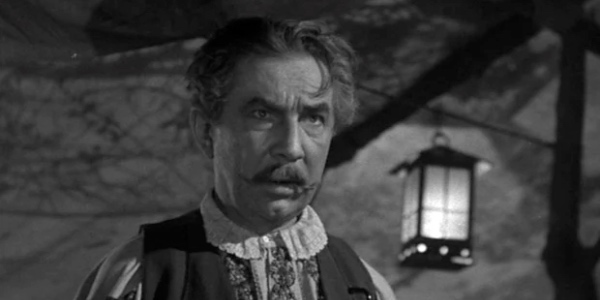
And ill-fated it is. He runs to the aid of Jenny as she is attacked by the wolf, the gypsy Bela (Bela Lugosi) transforming after seeing the pentagram on her hand. In Larry’s attempt to save her, he is bitten in the chest, turning and killing the wolf with the silver handle of his cane. While he survives the attack, strange circumstances begin to arise in its aftermath. Jenny’s body is recovered, her throat and jugular slashed. It looks like an animal attack, but the animal Larry claims to have fought is no where to be found. Instead, it is the body of the gypsy Bela, his head bashed in by a blunt object.
Conclusion
The Wolf Man moves fast in its pace, its runtime just 70 minutes. While I would have wished for it to have spent more time on the aftermath of Larry’s bite, the film maintains its pace until the very end. It moves through the funeral of the gypsy Bela, as well as the growing suspicion surrounding Larry’s attempt to save Jenny in the forest. While I am not the biggest fan of werewolf stories, this was the first time I found myself wanting the film to be remade for a modern time. There is a depth of despair, the universe randomly pointing out a person to be fated for the worst kind of isolation and loneliness, that the film only briefly touches upon.
As the realty of his predicament takes hold, Lon Chaney Jr delivers an exceptional performance, encompassing both the jovial and the despair of Larry, embracing the remorse and transforming into the cinematic creature that would join the ranks of Universal’s Creature Features that had come before. While [his transformation fails to be as groundbreaking as his father’s, the man of a thousand faces, Chaney Jr commits entirely from start to finish.
The Wolf Man ends with Larry meeting the same fate as the gypsy, a feeling repetitive feeling settling in as the curtains close and the credits roll. And while The Wolf Man may not have stood the test of time like many of its predecessors, it is a classic film that would lay the ground work for a continuing cycle of wolves for decades to come.
Does content like this matter to you?
Become a Member and support film journalism. Unlock access to all of Film Inquiry`s great articles. Join a community of like-minded readers who are passionate about cinema - get access to our private members Network, give back to independent filmmakers, and more.



